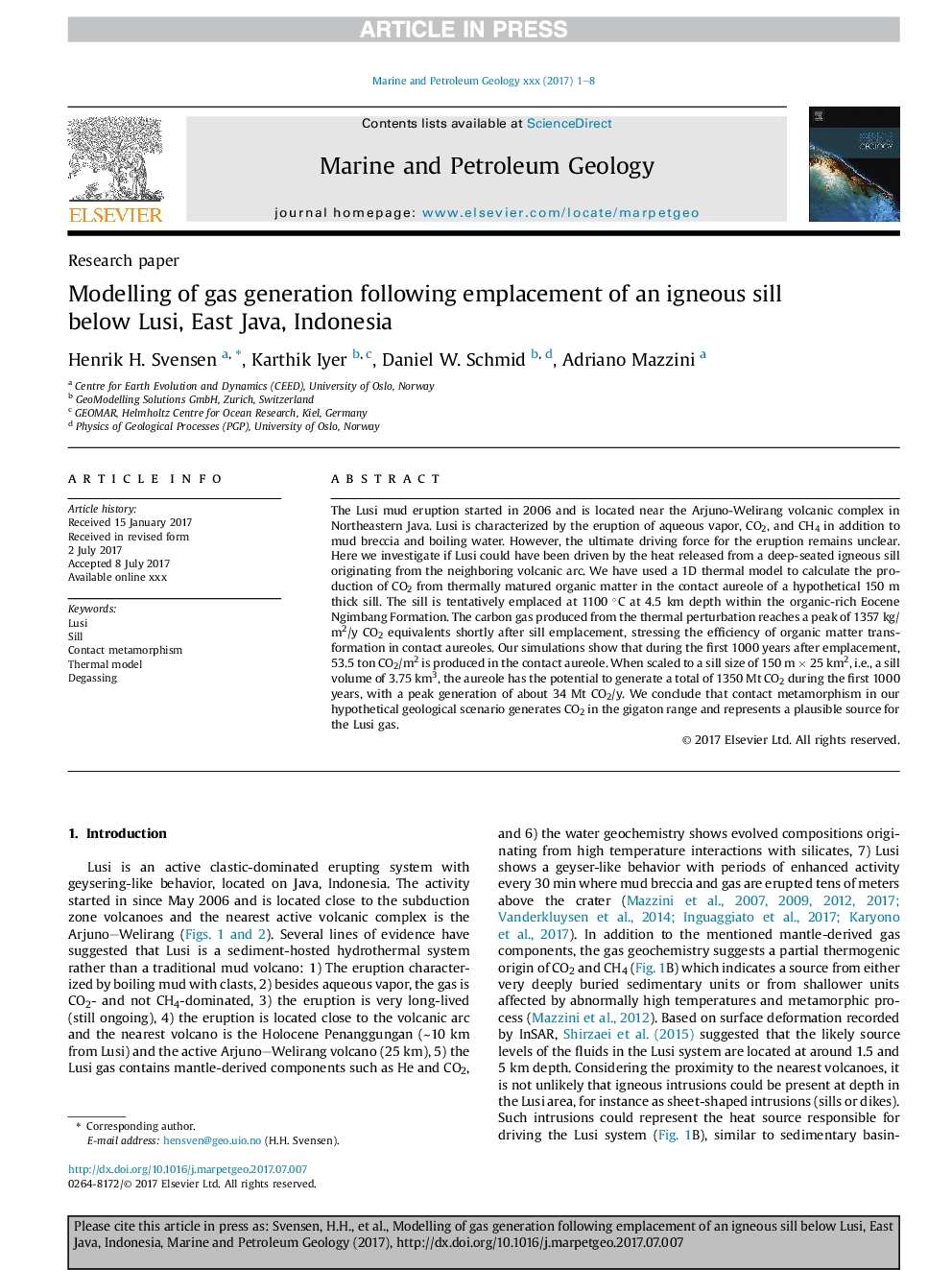| کد مقاله | کد نشریه | سال انتشار | مقاله انگلیسی | نسخه تمام متن |
|---|---|---|---|---|
| 8909251 | 1637135 | 2018 | 8 صفحه PDF | دانلود رایگان |
عنوان انگلیسی مقاله ISI
Modelling of gas generation following emplacement of an igneous sill below Lusi, East Java, Indonesia
دانلود مقاله + سفارش ترجمه
دانلود مقاله ISI انگلیسی
رایگان برای ایرانیان
کلمات کلیدی
موضوعات مرتبط
مهندسی و علوم پایه
علوم زمین و سیارات
زمین شناسی اقتصادی
پیش نمایش صفحه اول مقاله

چکیده انگلیسی
The Lusi mud eruption started in 2006 and is located near the Arjuno-Welirang volcanic complex in Northeastern Java. Lusi is characterized by the eruption of aqueous vapor, CO2, and CH4 in addition to mud breccia and boiling water. However, the ultimate driving force for the eruption remains unclear. Here we investigate if Lusi could have been driven by the heat released from a deep-seated igneous sill originating from the neighboring volcanic arc. We have used a 1D thermal model to calculate the production of CO2 from thermally matured organic matter in the contact aureole of a hypothetical 150 m thick sill. The sill is tentatively emplaced at 1100 °C at 4.5 km depth within the organic-rich Eocene Ngimbang Formation. The carbon gas produced from the thermal perturbation reaches a peak of 1357 kg/m2/y CO2 equivalents shortly after sill emplacement, stressing the efficiency of organic matter transformation in contact aureoles. Our simulations show that during the first 1000 years after emplacement, 53.5 ton CO2/m2 is produced in the contact aureole. When scaled to a sill size of 150 m Ã 25 km2, i.e., a sill volume of 3.75 km3, the aureole has the potential to generate a total of 1350 Mt CO2 during the first 1000 years, with a peak generation of about 34 Mt CO2/y. We conclude that contact metamorphism in our hypothetical geological scenario generates CO2 in the gigaton range and represents a plausible source for the Lusi gas.
ناشر
Database: Elsevier - ScienceDirect (ساینس دایرکت)
Journal: Marine and Petroleum Geology - Volume 90, February 2018, Pages 201-208
Journal: Marine and Petroleum Geology - Volume 90, February 2018, Pages 201-208
نویسندگان
Henrik H. Svensen, Karthik Iyer, Daniel W. Schmid, Adriano Mazzini,